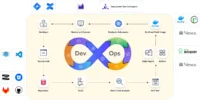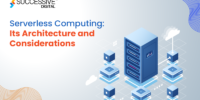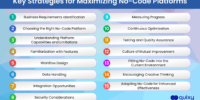As businesses increasingly migrate to the cloud, mastering cloud computing has become a crucial skill for IT professionals. Whether you’re new to the cloud or looking to enhance your expertise, these essential quick tips will help you navigate the world of cloud services efficiently.
1. Understand Cloud Service Models
Before diving into specific cloud platforms, it’s essential to grasp the three primary service models: Infrastructure as a Service (IaaS), Platform as a Service (PaaS), and Software as a Service (SaaS). IaaS provides virtualized computing resources, PaaS offers a platform for application development, and SaaS delivers software applications over the internet. Knowing the distinctions helps you choose the right services for your needs.
2. Learn Key Cloud Providers
Familiarize yourself with major cloud service providers like Amazon Web Services (AWS), Microsoft Azure, and Google Cloud Platform (GCP). Each has its strengths and specialties. AWS, for instance, is renowned for its extensive service offerings, while Azure seamlessly integrates with Microsoft products. Understanding the strengths of each provider allows you to choose the best fit for your projects.
3. Security Best Practices
Security is a top priority in the cloud. Implement best practices such as encryption, access controls, and regular audits. Leverage identity and access management (IAM) tools to manage permissions effectively. Stay updated on the latest security features provided by your chosen cloud platform and implement them to safeguard your data and applications.
4. Embrace Automation
Automation is a game-changer in the cloud. Use Infrastructure as Code (IaC) tools like Terraform or AWS CloudFormation to define and provision your infrastructure. Automation streamlines repetitive tasks, ensures consistency, and facilitates scalability. It’s a key component in achieving efficient, reliable, and reproducible cloud deployments.
5. Optimize Costs
Cloud services come with costs, and optimization is crucial. Regularly review your resource usage and identify areas where you can optimize. Use tools provided by cloud providers to monitor and analyze costs. Implementing cost allocation tags and choosing reserved instances can contribute significantly to cost efficiency.
6. Networking Essentials
Understanding cloud networking is fundamental. Learn about Virtual Private Clouds (VPCs), subnets, and security groups. Explore concepts like Content Delivery Networks (CDNs) for efficient content delivery. Mastering networking ensures that your applications are well-connected, secure, and performant in the cloud environment.
7. Disaster Recovery and Backup
Plan for the unexpected. Implement robust disaster recovery (DR) and backup strategies. Leverage cloud services to replicate your data and applications across multiple regions for high availability. Regularly test your DR plans to ensure that your systems can recover quickly in the event of a failure.
8. Stay Updated on New Features
Cloud platforms continually evolve, introducing new features and services. Stay informed about updates and additions to the services you use. Cloud providers often release features that can enhance performance, security, and cost efficiency. Regularly review documentation and attend webinars to stay abreast of the latest developments.
9. Develop Monitoring and Logging Practices
Implement robust monitoring and logging practices to gain insights into your cloud environment. Use tools like Amazon CloudWatch, Azure Monitor, or Google Cloud Monitoring to track performance, detect anomalies, and troubleshoot issues proactively. Effective monitoring is essential for maintaining the health and reliability of your cloud infrastructure.
10. Foster Collaboration and Training
Cloud mastery is a continuous learning journey. Foster collaboration with colleagues and engage in knowledge-sharing communities. Participate in online forums, attend conferences, and pursue relevant certifications. Cloud providers often offer training programs and certifications that validate your expertise and enhance your skills.
Conclusion
Mastering the cloud doesn’t happen overnight, but these quick tips provide a solid foundation for IT professionals aiming to excel in cloud computing. Whether you’re focused on security, cost optimization, or automation, incorporating these practices into your workflow will contribute to your success in navigating the dynamic and transformative landscape of cloud services.








